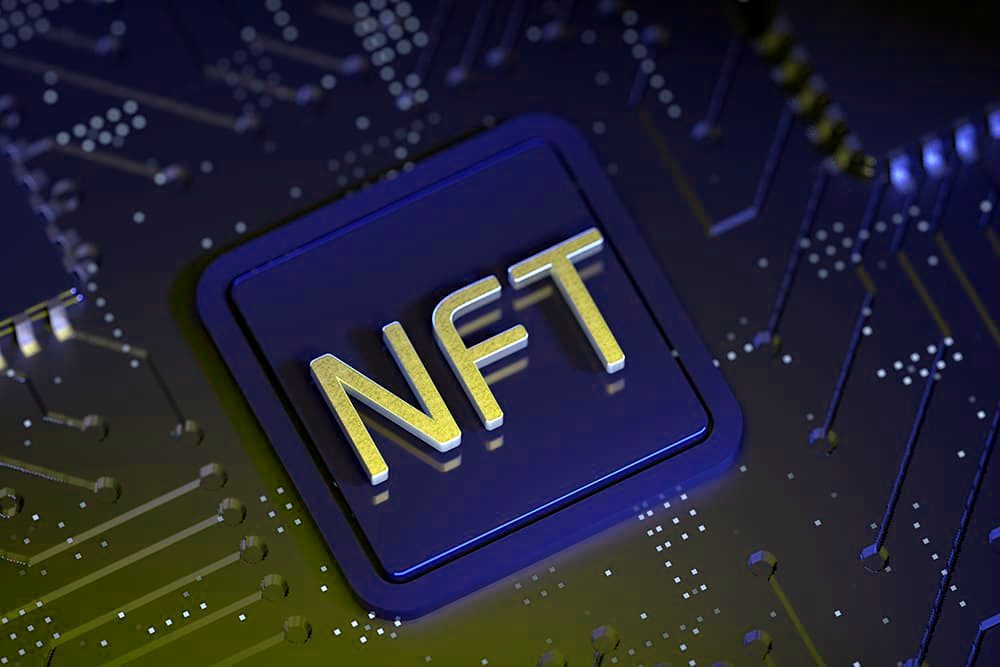Gemini Stock Price (GEMI): Your 2025 IPO‑Day Guide What Comes Next
Follow the Gemini stock price on IPO day (ticker: GEMI): pricing, first trades, valuation, drivers, risks, and how it compares with Coinbase and Circle.

The Winklevoss‑founded crypto exchange Gemini Space Station, Inc., just priced its initial public offering at $28 per share, above an already‑raised range, to raise $425 million and list on the Nasdaq under ticker GEMI. The deal valued Gemini at ~$3.33 billion at the offer and drew heavy demand—including a $50 million private placement by Nasdaq itself.
When trading began on September 12, 2025, the Gemini stock price jumped more than 30% right out of the gate, with early prints reported around $37 and intraday spikes above $40 as volatility halts briefly kicked in. Different outlets logged different first prints—$37.01 open with a run to $40.71 versus $41 on the opening cross—underscoring how hot, fast, and noisy IPO tape can be in the opening minutes.
By midday, coverage framed the debut as one of the week’s standout IPOs, lifting Gemini’s intraday valuation toward ~$4.4 billion.
Editor’s note: Prices here reference September 12, 2025 (IPO day). IPOs are volatile; always refresh your data before making decisions.
Quick facts: GEMI at a glance
| Metric | Figure |
|---|---|
| Ticker / Exchange | GEMI / Nasdaq |
| IPO price | $28 per share |
| Shares offered | ~15.2M |
| Gross proceeds | $425M |
| Initial price range(s) | Raised from $17–$19 → $24–$26 |
| First trades | High‑30s to low‑40s (reports of $37.01 open and $41 open) |
| Early intraday high | ~$40.7 (halt for volatility) |
| Valuation at IPO | ~$3.33B (non‑diluted) |
| Intraday debut valuation | ~$4.4B |
| Strategic investor | Nasdaq ($50M placement) |
| Key overhang | Ongoing SEC suit tied to prior lending program (“Earn”) |
| Notable facility | $75M credit line from Ripple disclosed pre‑IPO |
What moves the Gemini stock price now (and in the weeks ahead)
Near‑term drivers (days to weeks)
-
Debut mechanics & scarcity: Oversubscription in the bookbuild, a smaller final float than initial indications, and retail interest can amplify first‑day swings.
-
Crypto beta: GEMI is a high‑beta proxy for digital‑asset sentiment—Bitcoin/Ether moves, regulatory headlines, and spot‑ETF flows tend to correlate with exchange multiples.
-
Regulatory temperature: Reuters notes a friendlier U.S. stance in 2025, yet Gemini still faces an unresolved SEC action over its prior “Earn” product—good news can expand multiples; bad news can compress them.
-
Nasdaq partnership optics: The $50M Nasdaq investment (and related strategic tie‑ups) is a tangible vote of confidence that can support the narrative in early trading.
Medium‑term fundamentals (quarters)
-
Revenue scale vs. peers: Gemini’s H1 2025 revenue ~$68.6M and net loss ~$282.5 (per S‑1 summaries) point to a growth‑over‑profits profile, unlike Coinbase’s profitable 2024. Sustained take rates and institutional mix will be pivotal.
-
Balance sheet & liquidity: The $75M Ripple credit facility adds flexibility, but investors will parse cash burn and capital needs until operating leverage appears.
-
Product breadth: Custody, OTC, staking, and cards can diversify revenues—execution and compliance durability will decide whether that diversification actually stabilizes the Gemini stock price through cycles.
2025 context: Why crypto listings are back

GEMI isn’t debuting in a vacuum. Figure Technology Solutions shot higher in its Nasdaq debut this week, and Circle (CRCL) went public earlier this summer—both signaling revived investor appetite for crypto‑adjacent equities. Bullish also priced an upsized deal in August. This rising tide supports attention—and sometimes richer multiples—for new issues like GEMI.
Inside the S‑1: What Gemini disclosed
Users, assets, and mix
-
Verified users: ~14.6 million (as of June 30, 2025).
-
Assets under custody: ~$12B (as of June 30, 2025).
-
H1 2025 revenue: ~$68.6M; net loss ~$282.5M.
-
Institutional tilt: Pre‑IPO commentary and filings emphasize growing institutional activity via Gemini Prime.
Source (S‑1 summaries): TechCrunch; CryptoBriefing’s S‑1 read‑out.
You may also see third‑party estimates citing $18–$21B AUC depending on methodology and timing; always anchor to the latest S‑1 for apples‑to‑apples comparisons.
Risk factors to watch
-
Regulatory outcomes: The SEC case tied to Gemini’s prior lending product is unresolved; outcomes may affect costs, capital, or product scope.
-
Market cyclicality: Exchange revenues track trading volume and volatility—crypto bear phases can simultaneously pinch take rates and volumes. (S‑1 discussion echoed by sector comps.)
-
Competition: Coinbase’s profitability and Circle’s scale in stablecoins set a high bar on efficiency and distribution.
How the Gemini stock price stacks up vs. peers (early snapshot)
| Company | Ticker | Market cap (approx., early Sept 2025) | 2024 Revenue | 2024 Profitability | Notes |
|---|---|---|---|---|---|
| Gemini Space Station | GEMI | $3.3B at IPO; ~$4.4B intraday debut | $142M (FY24) | Net loss ~$159M | New listing; Nasdaq $50M placement; SEC case outstanding |
| Coinbase Global | COIN | ~$77.6B | ~$6.3B | Net income ~$2.6B | Profitable in 2024; category leader |
| Circle Internet Group | CRCL | ~$27–34B (recent range) | ~$2.0B TTM | N/A (TTM varies) | USDC leader; listed June 2025 |
Sources: Reuters (GEMI valuation); TechCrunch (Gemini FY24); Coinbase IR & SEC (COIN FY24); StockAnalysis/CompaniesMarketCap/Yahoo (market caps, CRCL revenue).
Interpretation tip: On debut, the gemini stock price implies a price‑to‑sales multiple well above its current revenue base—investors are paying for growth, market share wins, and a clearer regulatory path.
Reading today’s tape: levels and tells
Key reference points traders watch
-
$28 (IPO price): Classic reference—often acts as a psychological pivot. Sustainably trading above it can support medium‑term bull cases for the Gemini stock price.
-
$37–$41 (first‑print zone): Early supply/demand equilibrium; any sustained break above the $40–$41 area can signal follow‑through from allocation‑day buyers.
-
Halt dynamics: Early volatility halts aren’t unusual in hot IPOs; what matters is whether price discovery stabilizes with rising, rather than falling, volume.
What to monitor post‑IPO
-
Lock‑ups & secondary supply: Typical U.S. IPOs include ~180‑day lock‑ups. Watch for secondary offerings or unlock headlines that can pressure the Gemini stock price. (Check the final prospectus when filed.)
-
Quarterly updates: Revenue mix (retail vs. institutional), take rate, and expense discipline will shape the multiple.
-
Macro & crypto cycle: BTC/ETH trends, spot ETF flows, and policy news often ripple directly into exchange valuations.
How to track the Gemini stock price like a pro
-
Use multiple quote sources (brokerage app and a financial portal) during IPO week; opening auctions and halts can cause single-source quotes to lag. (Examples: Yahoo Finance and StockAnalysis maintain GEMI pages.)
-
Watch the news tape from at least two reputable outlets (e.g., Reuters + WSJ/IBD) to corroborate early price moves and volume.
-
Track the crypto backdrop (BTC/ETH) to anticipate beta‑driven swings in the Gemini stock price.
Don’t confuse GEMI with these look‑alikes
-
Gemini Group Global (GMNI) — an unrelated OTC microcap; not the Winklevoss exchange. If you search “Gemini stock,” GMNI sometimes appears. Check the ticker carefully.
-
Gemini Dollar (GUSD) — Gemini’s stablecoin, designed to track $1. That’s a crypto token, not equity.
2025 trend update: From winter to IPO spring
The GEMI listing caps a season of crypto‑linked offerings—Figure surged in its debut, Bullish priced an upsized IPO in August, and Circle successfully listed in June. Rising digital‑asset prices and a more permissive U.S. regulatory environment have helped reopen the window, a tailwind for interest in the Gemini stock price even as the company works through losses and legal overhangs.
The transition from the economic “winter” of cautious spending to the vibrant “IPO spring” of 2025 marks a powerful resurgence in global markets. After years of restrained investment, optimism is returning as innovation, AI, and green technology drive renewed confidence. Startups are preparing for long-awaited public listings, while investors are shifting focus toward sustainable growth and long-term value creation. This new season represents not just financial revival but a cultural shift toward resilience, creativity, and expansion across industries.
How to buy GEMI (step‑by‑step)
-
Confirm the ticker: GEMI on Nasdaq.
-
Check IPO eligibility: Some brokers restrict first‑day IPO allocations; secondary‑market buys are generally open.
-
Use limit orders: IPOs whip around—set a limit rather than a market order to control slippage.
-
Size positions modestly at first: Scale in; early days are volatile by nature.
-
Re‑read disclosures: Review the S‑1/prospectus before committing capital; track regulatory updates.
This article is for information only and isn’t investment advice.
Conclusion
Gemini’s debut checked three boxes that matter to public‑market investors: (1) strong opening demand above the IPO price, (2) a recognizable strategic backer (Nasdaq), and (3) a credible path to scale if crypto volumes and institutional adoption continue to firm up. Against that, the company carries meaningful losses, a live SEC case, and heavy competition from Coinbase and Circle.
If you’re tracking the Gemini stock price, the next big tells will be: stability above $28, how it behaves around $40–$41, and whether management can turn rising volumes into operating leverage over the next few quarters.
See More: Best Place to Buy Ethereum Online Top 10 Ultimate Sites
FAQs
Q) What is the Gemini stock price today, and where can I see it?
On September 12, 2025 (IPO day), GEMI opened in the high‑$30s/low‑$40s after pricing at $28. For live quotes, check your broker and a public portal (e.g., Yahoo Finance or StockAnalysis) to cross‑verify during volatile periods.
Q) What’s Gemini’s valuation after the IPO?
At pricing, Gemini was valued around $3.33B; in early trading, the market value climbed toward ~$4.4B as shares popped.
Q) How does the Gemini stock price compare with Coinbase and Circle?
GEMI’s market cap is a fraction of Coinbase’s (roughly $77B) and below Circle’s (high‑20s to mid‑30s billions recently). Those peers also operate at a larger revenue scale—COIN ~ $6.3B in 2024, CRCL ~ $2.0B TTM.
Q) What financials did Gemini report going into the IPO?
H1 2025: ~$68.6M revenue and ~$282.5 net loss; FY 2024: ~$142M revenue with ~$159M net loss. These figures come from the S‑1 and related reporting.
Q) What major risks could affect the Gemini stock price?
Regulatory outcomes (ongoing SEC case), crypto market drawdowns, and competitive dynamics across custody, trading, and stablecoins are the biggest wildcards.









